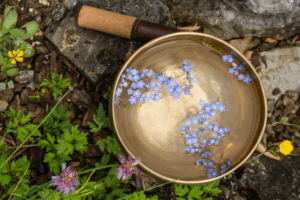Cynthia Bourgeault sits down with Wisdom Waypoints Board members, Jeanine Siler Jones and Heather Ruce, for a conversation on Centering Prayer, a cornerstone of Cynthia’s personal practice and teaching. Recording in the fall of 2024, shortly before the release of Cynthia’s new book, Thomas Keating: The Making of a Modern Mystic, Cynthia shares about her evolving journey with Centering Prayer which started with Father Keating. Listen in as Cynthia explains how, after four decades of deepening, Centering Prayer in her life “is not a technique but a relationship.”
Key topics and themes:
- Centering prayer is about forming a relationship with a deeper ground of existence, beyond transactional and concept-laden images of God.
- The practice emphasizes a silent relationship, not communicated through words or theories, but through a common interbeing.
- Centering prayer aims to change the brain’s operating system by cutting out subject-object thinking, fostering a state of non-dual awareness.
- A thought in centering prayer is anything that brings attention to a focal point, and the practice involves letting all thoughts go, regardless of content.
- The practice teaches living in a liminal zone of awareness, where there are no thoughts but still bright awareness.
- Cynthia emphasizes that centering prayer is not about clearing the mind but learning to release thoughts, aligning with the concept of kenosis (self-emptying).
- The practice is seen as a way to participate in the mind of Christ, focusing on letting go rather than achieving a state of no thoughts.
- The fruits of centering prayer are experienced in daily life, making practitioners more flexible, lower maintenance, and less insistent.
- Cynthia believes in balancing attention and surrender, using both centering prayer and mindfulness practices to create a rhythm akin to the breathing of God.
- Cynthia stresses the importance of not extracting insights from silence but simply resting in it, as the deeper self that emerges is beyond the ego.
- Thomas Keating experienced silence morphing into presence, a living, subtle presence that transforms and suffuses practitioners.


